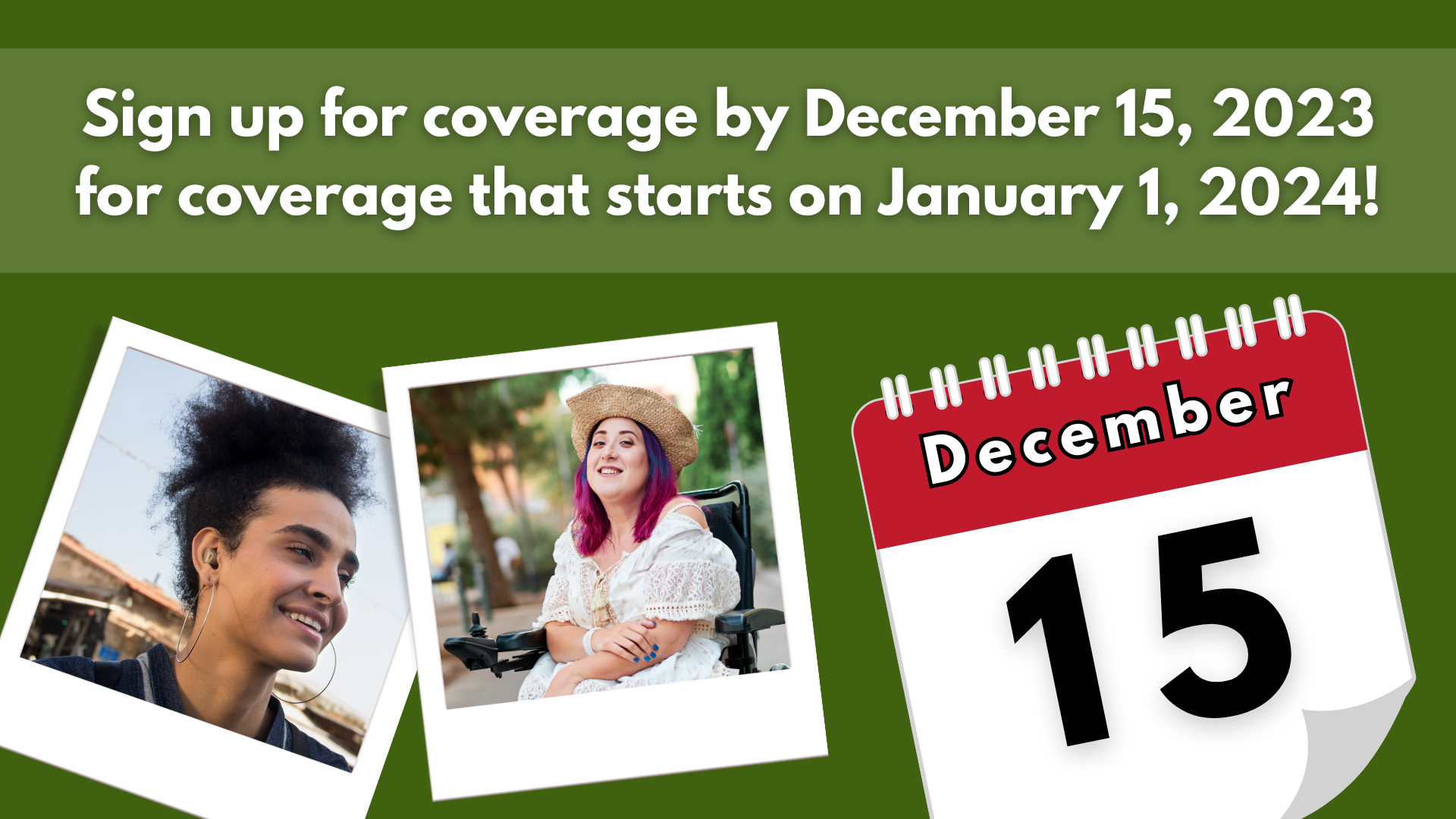SIGN UP BY DECEMBER 15 FOR COVERAGE THAT STARTS ON JANUARY 1
Start the new year off with affordable, accessible, and continuous coverage! Make sure to sign up for healthcare coverage through the marketplace by next Friday, December 15 for coverage that starts right on the new year on January 1. Visit healthcare.gov to start an application if Medicaid coverage was lost or review current marketplace plans.
As of December 7, over 11.9 million Medicaid enrollees have lost coverage, according to data from the Kaiser Family Foundation. 34% of those who completed the renewal process were disenrolled and 22.4 million enrollees were able to qualify for renewed coverage. The large range of disenrollment rates in each state varies, with the highest of 64% being in Texas and the lowest of 10% in Illinois. Out of all states with available data, 71% of all those disenrolled were due to procedural reasons.
CMS released the proposed rule for the 2025 Notice of Benefit and Payment Parameters (NBPP). The NBPP is a regulatory framework that is used by CMS to guide the federally facilitated marketplace (healthcare.gov). Read the proposed rules, draft letter, and factsheet; comments on the proposed rules are due January 2, 2024. For more information, read the Health Affairs report on the proposed rules.
The Department of Health and Human Services reported that more than 7 million people were able to select affordable health coverage in the marketplace since the start of open enrollment. 1.6 million were new to the marketplace and 5.7 million were able to return to their previous marketplace plan for coverage renewal or selecting a new plan.
Navigators who work with people with disabilities should have all the resources that they need as it relates to enrollment in the Affordable Care Act Marketplace during Open Enrollment from November 1 to January 16. These resources consist of a Disability Guide to help in identifying issues that are central to healthcare insurance for people with disabilities along with 17 topical and 9 population specific factsheets.
The CHIRblog released their weekly Navigator Guide FAQs for open enrollment; this week’s focuses on Marketplace coverage issues for LGBTQI+ individuals, a common intersectional identity with disability. Referencing the Centers for Medicare and Medicaid Services (CMS) enrollment theme toolkit, this guide covered issues like coverage for gender transition and pre-exposure prophylaxis, and culturally competent providers. The other guide delves into comparing plans with common topics like premiums vs. deductibles and differences in bronze, silver, gold, and platinum Marketplace plans.
The Georgetown University Center for Children and Families found that states with low Medicaid participation rates experienced the highest child coverage gains while the continuous coverage requirement was put in place. With the end of this provision, millions of children are losing healthcare coverage, however some states are in the process of seeking federal permission to extend coverage for children.
The Commonwealth Fund analyzed what states are currently doing to maintain coverage for people during the unwinding. States are attempting to limit coverage gaps, establishing programs to lower paperwork burden via auto-enrollment programs, and enhanced financial assistance. As time goes on, these initiatives will be assessed to measure their full impact on providing continuous coverage for people.
Archives of our weekly updates are available on the NDNRC website.

